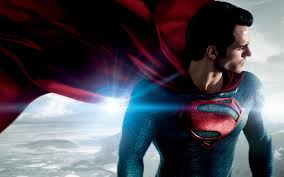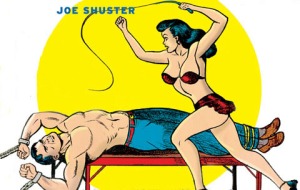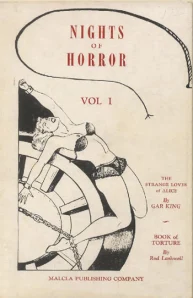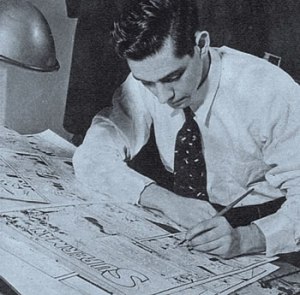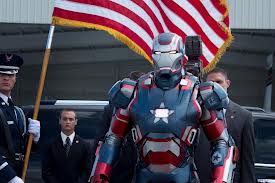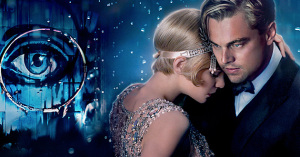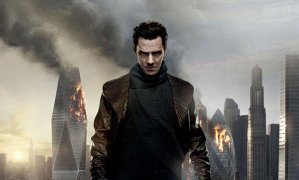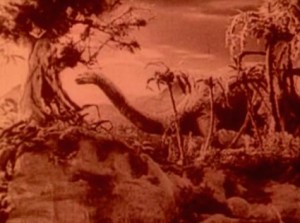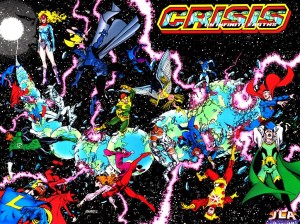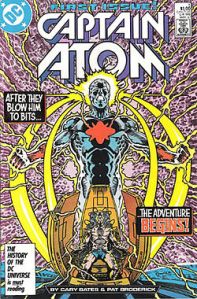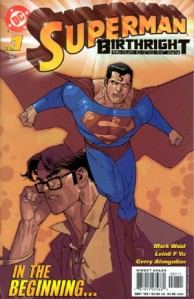There have always been two flavors of superhero: Marvel and DC. When my dad was reading comics in the 40s, Marvel (AKA Timely) threw anti-heroes into DC’s original, and so much blander. good guy mix. When I was reading comics in the 70s, Marvel put out the sophisticated stuff, DC the embarrassingly childish. My twelve-year-old son reads the occasional comic now but mostly takes his superheroes in movie form like everyone else in the 21st century. But Marvel and DC are still the reigning flavors. Only these days Marvel Entertainment tends toward the comically playful, Warner Brothers the pretentiously somber.
Look at Iron Man 3, an incoherent but highly entertaining comedy. The slapstick moment in The Avengers when the Hulk punches Thor after teaming up to fight alien invaders made me snort so loudly I embarrassed my teenaged daughter. Dark Knight Rises on the other hand, not so much with the uncontrollable laughter. Ditto for Man of Steel. Is that a bad thing? Well, it means my wife writhed in her seat for 143 minutes, tweeting updates of her torture. My son at least enjoyed the fight scenes.
I’m not a big Zack Snyder fan. 300 enraged me, Watchmen bored me. But Man of Steel I can mostly live with. Except for the shot after shot after World Trade Center-inspired shot of collapsing New York. When the hell did 9/11 get downgraded to CGI fodder?
But aside for the drone Superman downs in the epilogue because the government keeps trying to invade his privacy, Snyder isn’t interested in the War on Terror. He, like so many recent superhero writers, is stuck in World War II. General Zod is this month’s Hitler reboot. If a field of human skulls is too subtle a Holocaust allusion, Superman spells it out: “You’re talking about genocide.”
There’s been some internet kvetching about the damage the movie does to old Superman mythology. Aside from a few four-winged dragons, I disagree. For all his pretentious somberness, Zack Snyder gets Jerry Siegel. Superman was born to battle eugenics, and eugenics is what Man of Steel is mostly about.
Snyder’s Krypton isn’t a luckless ice planet dying of old age. It is the pinnacle of selective breeding, a planet whose inhabitants have taken the reins of evolution and engineered themselves into a race of violently amoral ubermensch. They breed scientifically, culling only the so-called best from a gene pool Registry. As one of Zod’s sidekicks quips: “Evolution always wins.”
Siegel said as much in Superman #1: “Superman came to Earth from the planet Krypton whose inhabitants had evolved, after billions of years, to physical perfection!” In Superman’s newspaper comic strip premiere, Krypton is “a distant planet so far advanced in evolution that it bears a civilization of supermen—beings which represent the human race at its ultimate peak of perfect development!” How can aliens represent the human race? Easy. They’re not aliens. The original Krypton was Earth:
“In his laboratory, the last man on Earth worked furiously. He had only a few moments left.
“Giant cataclysms were shaking the dying planet, destroying mankind. It was in its last days, dying . . .
“The last man placed his infant babe within a small time-machine he had completed, launching it as—
“—the laboratory walls caved-in upon him.
“The time-vehicle flashed back thru the centuries, alighting in the primitive year, 1935 A.D.”
That’s the script Siegel mailed Buck Rogers artist Russell Keaton in the summer of 1934. After drawing a few test scripts, Keaton turned him down, and Siegel crawled back to his high school pal Joe Shuster.
But his Superman wasn’t from a galaxy far far away. He was barely even scifi. After the German invasion of Poland and France, William Marston wrote that Siegel “believed that the real superman of the future would be someone with vast power who would use his invincible strength to right human wrongs.” That phrase, “the real superman of the future,” is literal. The Superman was the stated goal of eugenics.
Krypton’s Registry, the Codex of the genetically fit that General Zod wants so desperately–that’s literal too. American tycoon John Harvey Kellog (yes, you’ve eaten his cornflakes) and his Race Betterment Foundation started it back in 1915. Long Island’s Eugenics Registry Office opened in 1910, advocating the prevention of unfit breeding through immigration restrictions, racial segregation, anti-interracial marriage laws, sterilization, and “euthanasia.” The committee recommended every American smallville have its own gas chamber.
By the time Siegel was writing, Germany had adopted that American model and was expanding it into Auschwitz. That’s the Krypton Siegel was fighting against. His Superman was literally the Nazi Superman, plucked from the eugenic future and redirected to fight the superpowers who evolved him.
So I get why Snyder’s take is light with the laugh track. But didn’t we already win World War II? I wouldn’t mind a history lesson–in fact, yes, let’s please correct all the U.S. History textbooks that have conveniently written out the U.S.’s leadership in the eugenics movement. Eugenics was still taught in high school biology classes even while we were at war with the movement’s ultimate champions. A Superman fan in the late 30s and early 40s would have gotten Siegel’s allegories. But of the millions who saw Man of Steel opening weekend, how many registered anything but a Dark Knight-esque scifi romp? We should understand General Zod as more than just some alien supervillain. He’s us. He’s America’s darkest potential. I’m not sure even Snyder knows that.
I don’t necessarily object to Hollywood using the Holocaust and 9/11 to rake in profits. But I do expect something in the trade. Maybe some sly introspection? A little under-the-current thought-provocation on the socio-political issue of the film-makers’ choice? Instead, we get more destruction and a Superman who indifferently pulverizes his own Smallville and Metropolis during his ubermensch slugfests. Are we really not supposed to think about the collateral body count in the convenience stores and skyscrapers? There’s a lot of reasons not to laugh during this movie.
I was being partisan as kid when I duped myself into thinking Marvel was so much more sophisticated than childish DC. Maybe I’m still duping myself. Marvel Entertainment has no trouble cranking out its own brand of pretension. But superheroes remain a goofy genre, endlessly championing CGI fight spectacles over story and character.There’s a rather low, Hollywood-imposed limit to what such a movie can do. Zack Snyder’s somber palette and frowning ubermensch (did I mention the Christ motif?) aren’t pushing any of those boundaries. Neither are the members of the cheerier, Joss Whedon team. But when I go to my smallville theater to watch some guy in a cape, I prefer to come out giggling.

